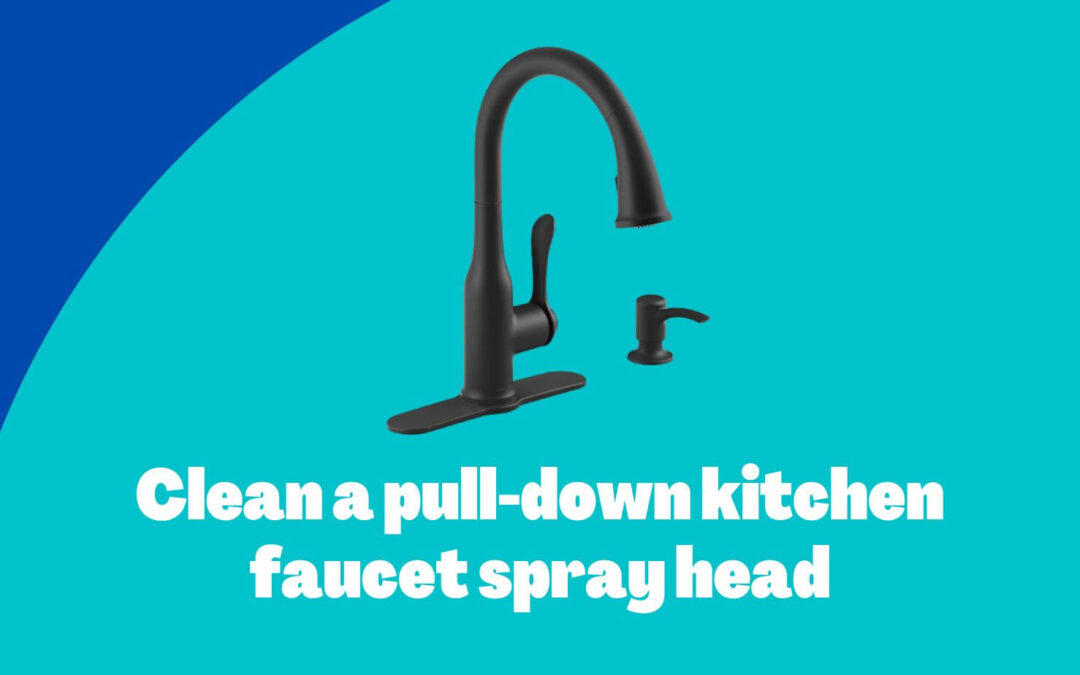Cleaning a pull-down kitchen faucet spray head is a simple task that you can perform when you follow the proper steps. Cleaning the pull-down kitchen faucet spray head can result from issues with water flow that, in most cases, becomes low. If the water flow in the faucet is low, debris builds on the spray head, hindering water flow out of the faucet.
Before you conclude that cleaning the kitchen faucet spray head is the solution to your problem, consider checking other related parts. Sometimes, there are parts that you cannot think of that cause issues with water flow or pressure. However, cleaning the pull-down kitchen faucet spray head is a maintenance practice of any device.
Well, the guide provides the necessary steps you can follow to properly clean the pull-down kitchen faucet spray head if there are any issues with it. Remember, when you are cleaning this part, there are some other parts that you will need to clean that you need to be keen with. Moreover, there are answers to several questions that you ask yourself.
Steps of cleaning a pull-down kitchen faucet spray head
I. Remove debris at the aerator
The first step when cleaning the pull-down kitchen faucet spray head is cleaning the aerator. If you do not know the aerator, it is the screen located at the front end of the faucet. The aerator helps add air to water so that it splashes out as a streamline of particles when you turn on the valves. Remember, even the spray head has the aerator for the same purpose depending on the manufacturer of the faucet that each chooses where to place the aerators.
Therefore, to clean the aerator, you need to remove it so that you can see the debris and remove any particles. So, take out the spray head to get the aerator, remove the screws, and pull out the aerator. Put the aerator inside the water and remove the accumulated debris. Choose to use a soft piece of cloth or soft brush to rub off the dust that sticks into the part.
II. Clean the spray head
After cleaning the aerator, you now have the spray head that is ready for cleaning. Remember, the spray is the way for anything that accompanies water such that if the debris is very small, it will pass through with water, but if they are medium in size, the spray head will filter the water, and the sediments will deposit there.
Therefore, it is good to clean the spray after use for some time to avoid overstay of the deposits at the head since it can reduce the speed at which water flows out of the faucet when using it in the kitchen. It will then waste your time since you will wait for the water to flow for a longer time to use it.
Avoid opening the spray head when cleaning since it can lead to damage. The process of cleaning is as simple as dipping the spray head in the water. The only condition with the water to use is that you need to add vinegar and ensure the water is distilled.
Give the spray head time to stay inside water for at least 12 hours, then rinse it with pure water. After cleaning the spray head, everything will be fine, and the water flow will be good.
After cleaning the spray head, the water flow is still low. The problem is neither with it nor the aerator. So you need to check the hose and pipes for any blockages and remove the accumulated dirt. Therefore, consider cleaning the faucet frequently to avoid failures and start fixing parts.
Frequently asked questions
1. How do you clean a Moen pull-down kitchen faucet spray head?
There are two different ways you can use to clean a Moen pull-down kitchen faucet spray head. One way is by opening the faucet spray head to remove the aerator and clean each separately, while the other is by putting the whole spray head in vinegar water to soak the debris and then rub them later.
The options depend on the spray head, as at some point, it looks like there is a lot of dust that you cannot open but instead just deep in water for soaking. Let’s check the two methods of cleaning Moen pull-down kitchen faucet spray head below:
Removing debris from the aerator
One of the most common methods is to work with the aerator to clean it first. As we all know, the aerator is the front screen at the faucet spout that allows air into the water, causing water to flow in a streamlined manner. Every faucet has an aerator; however, their difference from other faucets exists with their make. Using the aerator key, open it to get out the spray head apart for easy cleaning.
At this point, you can easily find parts with damage or lose connections and fix them to avoid further failures. Using a magnetic kit, place the screws you will remove and other small parts to add to the faucet to prevent being lost. Now take the aerator and place it in water, then use a soft brush or piece of cloth to rub the debris that sticks to the aerator.
Clean the whole spray head
Cleaning the whole spray head is the other method to use. The faucet has a lot of dust accumulating, and you cannot easily remove the aerator. The process is fantastic when you perform it once in a while, as it cleans even the internal parts.
The only thing needed here is clean water, vinegar, and a basin. Add water to the basin, and some drops of vinegar, then dip the spray head inside and give it time to soak. After that, rinse the spray head clean and assemble everything to place.
2. How do you remove the spray head from the pull-down faucet?
To remove the spray head from the pull-down faucet, check the steps below:
- Remove the spray head gently by disconnecting it from the base as you unscrew the screw holding it.
- Twist the spray head gently after removing the screws and pull it.
3. Why do you need to clean a pull-down kitchen faucet spray head?
Cleaning a pull-down kitchen faucet spray head is necessary as it removes the dirt that accompanies it causing them to clog. Most people wonder where the dirt comes from and if their water is clean. Okay, there are two types of water: soft and hard. So if you use hard water, there are obvious minerals accompanying it since hard water is rich in minerals.
When water flows, minerals deposit in the spray head. In addition, in a house with children, they tend to grab the spray head when washing, yet their hands are dirty, leaving the dirty particles in the place.
4. Is it good to dip the faucet in vinegar for longer?
Dipping the faucet in vinegar solution for a long time is not good since it is acidic and can damage the edges of the faucet. However, maintaining the needed time is good. Remember, vinegar is a natural cleaning agent that most individuals use even with stronger machines.
However, if vinegar is not working to the point you want, choose to use a different cleaning as it is less strong than other chemicals. Moreover, after using the cleaning agents, you need to rinse the faucet with clean water to have fewer effects.
5. Can a spray head cause low pressure of water when running?
When your water is flowing with low pressure, please do not assume that the issue can be with the spray head since there are other related issues. However, choose to remove the spray head and run water without it. If there is good pressure with water, you need to clean the spray head as it can cause low water pressure.
However, if water still runs with low pressure, check on some other parts of the faucet, like the hose and pipes, to clean them since there could be debris that accumulates, causing water pressure issues.
Conclusion
If you have worries about how you will clean a pull-down kitchen faucet spray head, then you need not. Have you ever tried cleaning and found difficulties with the process? Well, I’ve got you covered since the guide above has provided the two best ways you can try and clean the faucet’s spray head. The only thing needed is water, vinegar, a soft brush or a piece of cloth to rub the dirt, and a basin for water. With the tools, everything is good, and you can get back your devices in case of any issues.
Always maintain patience when cleaning the pull-down kitchen faucet spray head. Remember, every faucet has an aerator, including the pull-down kitchen faucet, but its appearance differs. Both methods are suitable; however, deep cleaning is the best as it cleans all the parts uniformly.

As the chief content writer, Hassan Al Sarker works as a professional kitchen-based content creator at Kitchen Liker.
In addition to reviewing the content published on Kitchen Liker, he ensures that it is accurate, relevant, and helpful. As a result, all the reviews and information published at Kitchen Liker are neutral and userfriendly.
Hassan Al Sarker has a bachelor’s degree in Hotel and Tourism Management From the Newyork University. Before joining Kitchen Liker, he was a contributor at Kitchen Club, United States.

